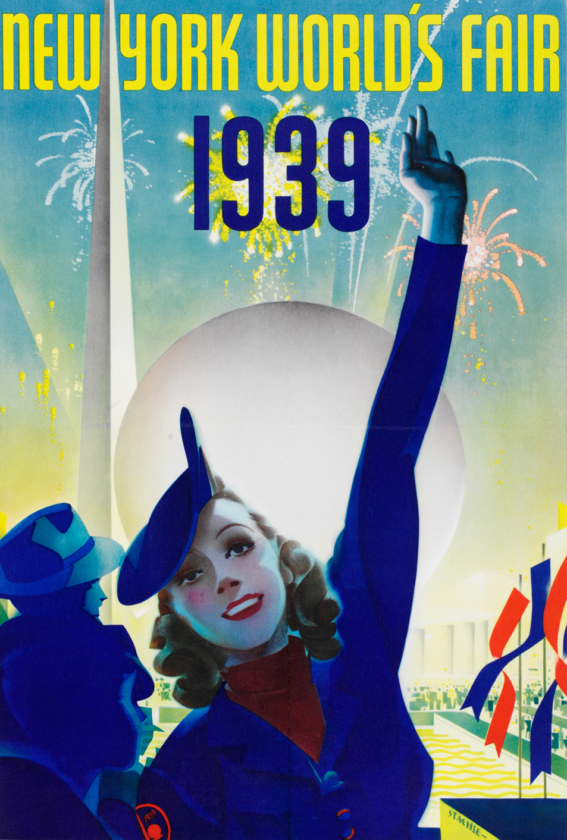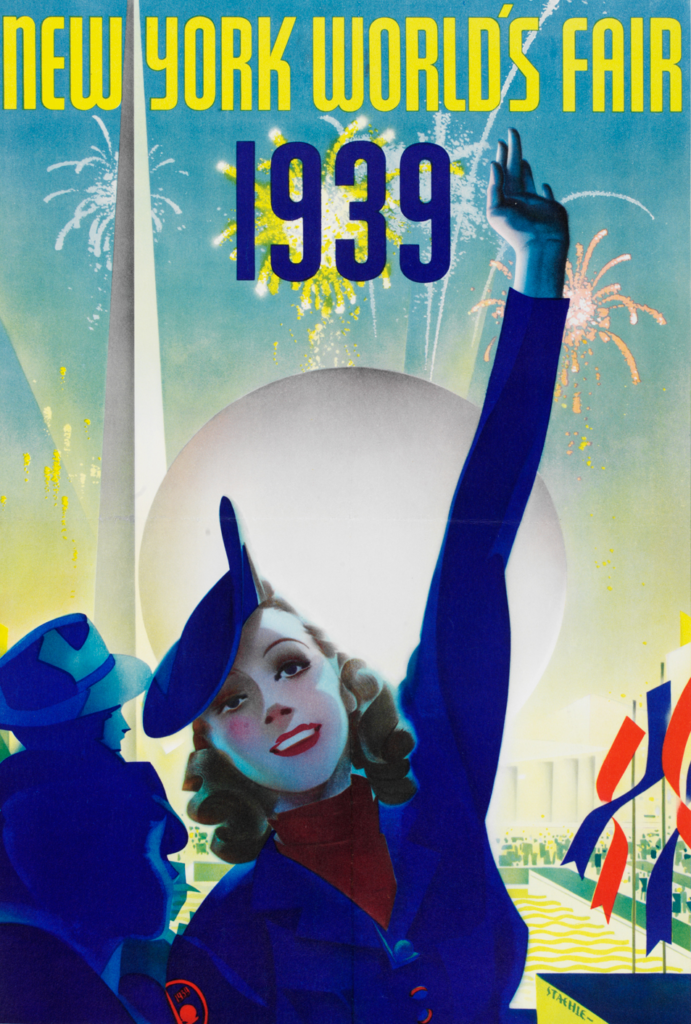By Steven Stollman
This Anniversary Celebration of the two notable World’s Fairs staged in New York City during the Springs and Summers of 1939-40 and 1964-65, intends to preserve the essential spirit of these events, the varieties of Cultural Expression, the marvels of Cutting-Edge Technology, the Fun, the Food, the Rides and all the rest. Taking place in 2019 and 2020, its focus will be on a bottom-up, modern, and fully interactive interpretation of this classic exposition, while adding the novel notion of simultaneous mini-events, taking place at many diverse locations around the country and the world at the same time, instead of just in one place.
As a prime focus, artists, craftspeople, designers, mechanics, and engineers are being encouraged to begin immediately to fabricate the next generation’s human-scale transportation system, the weather-protected bikes, and wheelchairs that will fill our urban spaces. We will work to motivate individuals and small groups to begin this work, where they are and right away. In the Spring of 2019, we will invite them to bring their creations to the World’s Fairgrounds in Queens New York, to show them off and exchange ideas with other participants. Meanwhile, they will have been working for a year to expose these ideas to their own communities while also exhibiting them on our website. We will also be reaching out to individuals and institutions here to provide hospitality to visiting builders and transportation companies, to help get their vehicles here for the show.
Another theme prominently featured will be Agriculture and Nutrition, with opportunities developed for city-dwellers to experience growing environments directly, by facilitating inexpensive travel to rural environments while also providing ethnically-rich and nutritious foodstuffs to all. The ultimate goal here is to habituate people to eating more consciously and healthfully, while also more greatly appreciating the range of tastes and preferences enjoyed by those with different backgrounds and influences. The third major subject category is the ways in which neighborhoods can become friendlier and more supportive of their own resources, both human and natural. We want to help answer the question: How can members of communities organize and express themselves more fully, in order to take more responsibility for their surroundings and have a greater influence over them?
The last major area of interest here is in Cultural Expression and the diversity which characterizes our planet as expressed through music, dance, poetry, and other distinctive ways of interpreting our lives. As well as seeking out opportunities for these expressions to take place during the event, in keeping with the traditions which have characterized events such as this historically, we intend to invite demonstrations of the role that technology does and can play, in helping us to enjoy these creative performances.
The ordinary definition of a World’s Fair is a collection of exhibits, put together by large corporations, industries, and Governments, to impress the public with their grasp of the future and value to us in the present. Visitors are expected to congregate where huge, expensive but temporary pavilions have been constructed, to house elaborate exhibits. Spectators are expected to be dazzled and impressed with the importance of these enterprises and their products and take home souvenirs that will someday earn them a fortune on eBay. Despite the typical grand scale and the sense of remoteness that it sometimes invokes, the fact is that most attendees enjoy these spectacles enormously and never forget the impression that they made on them. Of course, now that TV (first demonstrated in NYC at the 1939 Fair) has rendered the most exotic the most commonplace, we need a re-working of this experience and a more interactive approach.
Communications and information are two fields that have developed extraordinarily in recent times, much of it through miniaturization and already have changed the way we live dramatically. Transportation, the next field to be revolutionized, and miniaturized, is a subject that has been overly influenced by the self-centered agendas of those in a position to benefit from maintaining the status quo. A car today is, in an urban environment, as absurd as a twenty-pound cellphone. The President of the United States says our “Economy is built on innovation”. Around the world, many of the tasks we perform are done with archaic tools, oversized cars, and trucks prominently among them. Intensive research into available alternatives is crucial. By creating conditions that permit us to more easily learn from one another, we are better able to use the benefits that are generated by this activity, while continuing to fuel our researches and making it easier to adapt our thinking and behavior to best utilize our new knowledge.
The Chinese Politburo many years ago decided to favor funding road-building and car manufacturing over mass transit and more recently had even begun to ban bikes and electric bikes from some roads, until popular discontent forced them to reverse their stands. The wisdom of giving more attention to the needs of the majority of the population is clear but the means to accomplish this is less so. What is obvious to nearly all is the need to begin to conserve resources. The danger of simply following the example of the United States and the Western industrialized world, which defines progress as growth, is manifest, and traffic jams now plague every continent. Substituting quantity for quality in determining the nature of our economic success is causing enormous problems. In a world where hunger is still a serious problem, converting food into fuel for cars is only the most obvious example of our folly, but not the only one.
We must figure out how to provide ourselves with the level of creature comfort that we are now accustomed to in our transportation system, without the enormous economic and environmental costs that this now entails. The most direct path to this end is human-scale and human-powered vehicles, with electric assistance. They can provide the means for this conversion to take place, from industrial-scale vehicles, especially petroleum-powered, which are inherently both dangerous as well as unsuitable for crowded urban environments. If the internal combustion engine had just been invented there is no way that we would have allowed it on our streets. Poison gas in any quantity is forbidden in indoor spaces, but so common that it is virtually invisible in our shared spaces.
This insult to our health and well-being is only tolerable because it has been with us for so long. Those who benefit from its inherent hazards and inefficiencies spend enormous amounts of money to convince us otherwise. The real problem is the lack of suitable alternatives. There is not even wheelchairs (which could be another name for cars) or bikes, an essentially 19th-century design, with umbrellas. Upgrading the least expensive modes of travel sufficiently to replace the outmoded ones we currently use will have an enormous influence on our surroundings. Multi-ton vehicles traveling at common speeds have an immense negative impact on our sense of peace and tranquility. While we now associate all of this hyperactivity with the energy of the urban experience, the noise alone is often so intrusive that you can not even carry on a normal conversation.
It makes good sense to use the 1255 car-free acres of Flushing Meadows Corona Park, the World’s Fairgrounds, to bring together a host of creative, ingenious and caring people, to take on this important challenge and demonstrate how it can be dealt with, to a vast local and global audience.

